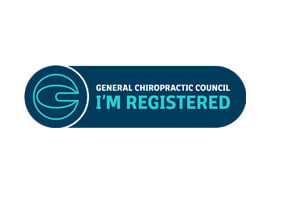 Regularly sit with your wallet in one back pocket? Your sacroiliac joint may not thank you! Sitting with your wallet in your back pocket tilts the pelvis and can put more strain onto one side of the pelvis and spine.
Regularly sit with your wallet in one back pocket? Your sacroiliac joint may not thank you! Sitting with your wallet in your back pocket tilts the pelvis and can put more strain onto one side of the pelvis and spine.
The sacroiliac joint – what and where is it?
It is estimated that the sacroiliac joints are responsible for 15% to 30% of lower back pain cases1, while other sources claim it could account for up to half of all lower back pain2. The sacroiliac joint, or SI joint, connects the hip bone (ilium) to the sacrum, the triangular bone between the lumbar spine and the tailbone (coccyx). There is one SI joint on each side of the pelvis. The main function of the sacroiliac joints is to absorb shock between the upper body and the pelvis and legs. The SI joint typically doesn’t move very much and it is considered to be a very stable joint. The joint is strongly supported by lots of strong ligaments surrounding it (not shown in the diagram). These extend across the joint and into the back and rest of the pelvis. This network of ligaments provides support, limits too much necessary movement in the joint, and assists with absorbing forces and pressure. Some of the muscles that support the sacroiliac joint include the gluteus maximus and the piriformis muscle.
Who struggles with SI joint pain?
Anyone at any age can struggle with pain in SI joints although typically it occurs more commonly as people get older. It is also particularly common for ladies during pregnancy. We also see many gentlemen that sit continuously with their wallet in their back pocket which can put much more strain on one side of the back and onto one sacroiliac joint.
Signs and symptoms
- Pain or aching over the top of the buttock area/pelvis with or without pain that radiates into the buttock and lower back
- If the joint is sprained pain may be sharp and stabbing in nature
- Pain may be worse when weight-bearing, bending forward and when moving from a seated to a standing position
- Pain is often relieved with rest or gentle walking
What can chiropractors do about it when it hurts?
First of all, the chiropractor will examine you to determine whether or not they feel the SI joints are responsible for your pain. We can work with the joints and muscles to help to restore movement and reduce pain. We can advise how to manage the pain and home and stop pain from coming back. 1. Cohen, S., Chen, Y. and Neufeld, N., 2022.
Sacroiliac joint pain: a comprehensive review of epidemiology, diagnosis and treatment. [online] Taylor & Francis. Available at: https://www.tandfonline.com/doi/abs/10.1586/ern.12.148?journalCode=iern20 [Accessed 17 January 2022]. 2. Carnes, M. and Vizniak, N., 2012. Quick reference evidence-based conditions manual. 3rd ed. [Canada]: Professional Health Systems Inc., pp.48-49.



